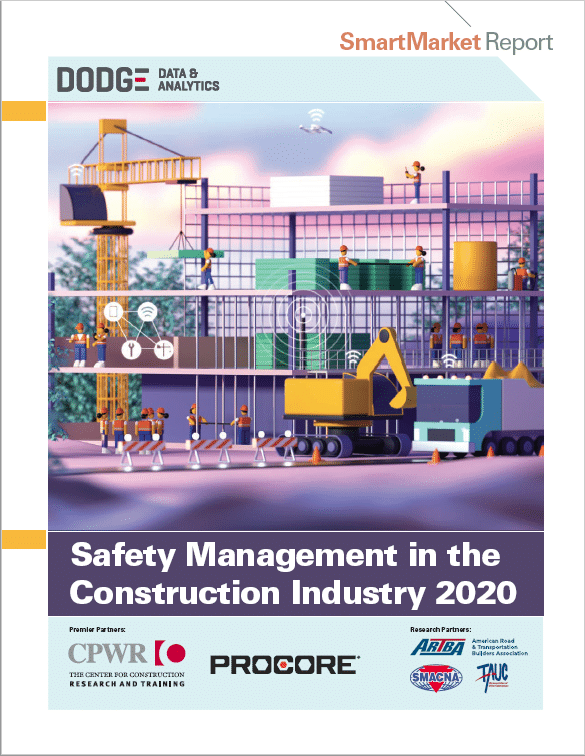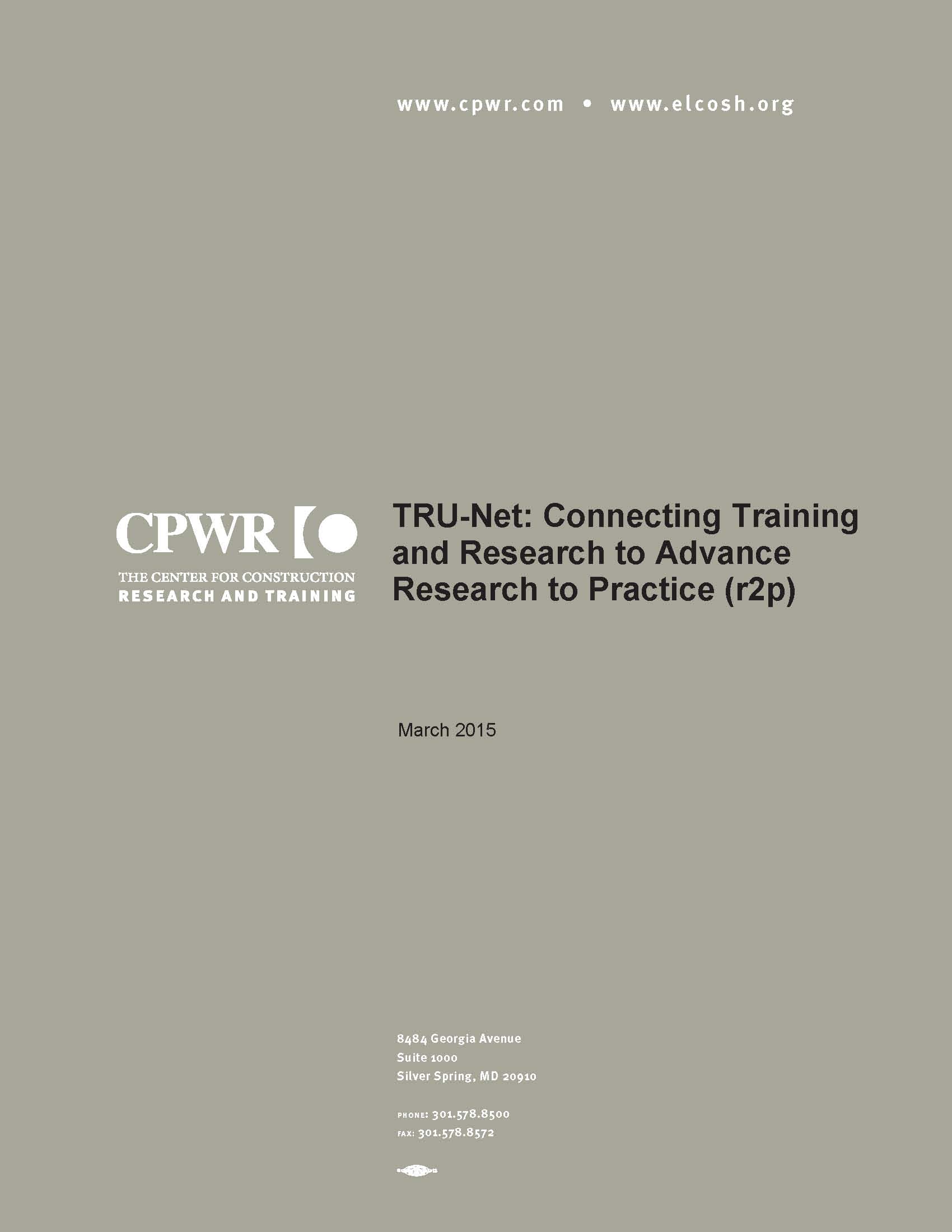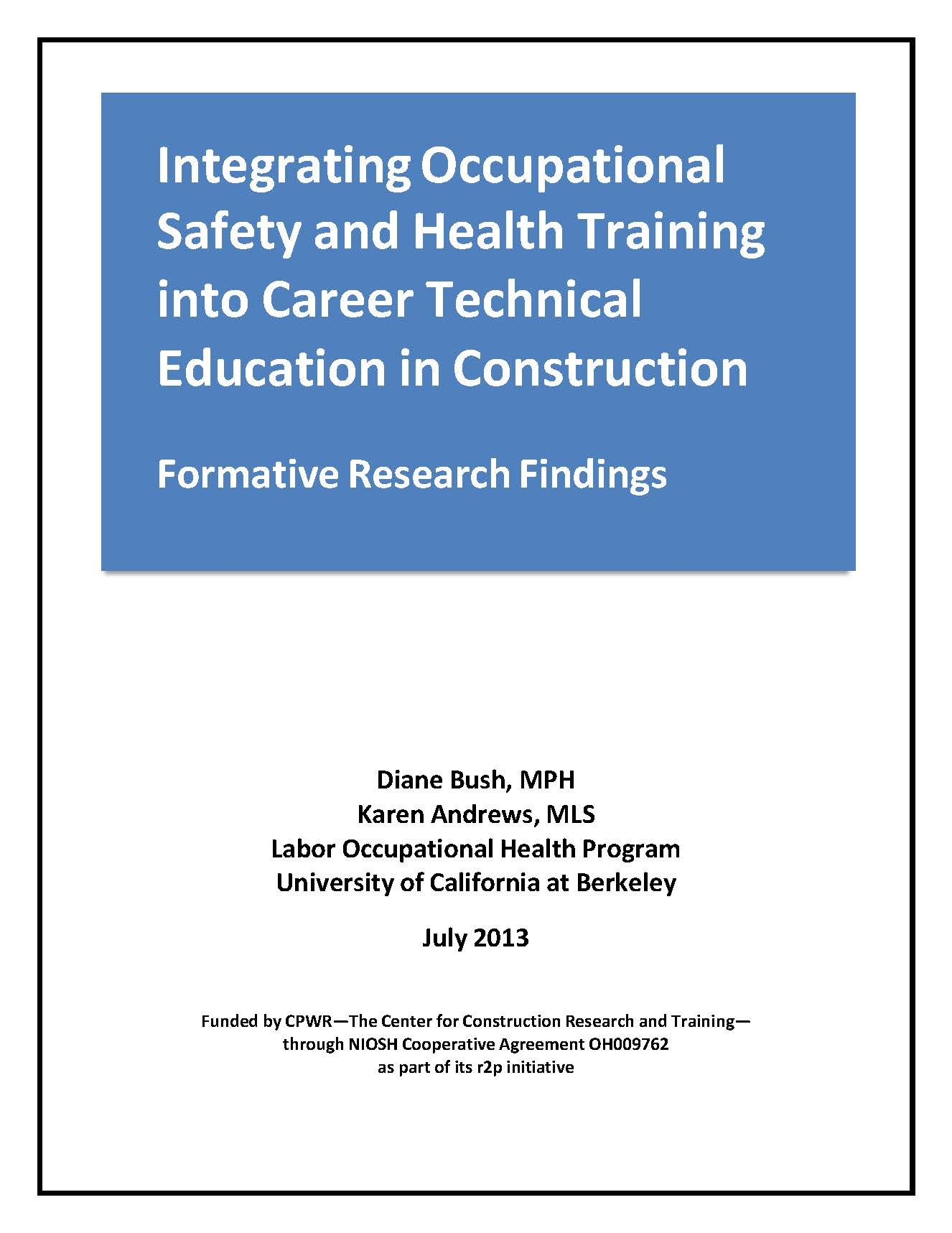Special Reports
From Summer Internship to Impactful Industry Collaboration: A Case Study on Moving Safety Research to Practice
This study explores a 4 1/2-year research-to-practice (r2p) partnership between university researchers and a contractor. This collaboration led to significant advancements in ergonomic injury prevention and safety culture at the company. This study offers two main contributions: (1) a guide for cultivating excellence in researcher-industry partnerships, and (2) evidence of how mutually beneficial actions and trust-building improve the effectiveness of r2p initiatives.
Variations in States’ OSHA Consultation Programs in Construction
Wayne B. Gray, Ph.D. and John Mendeloff, Ph.D.
This report examines the operations and outputs of OSHA’s On-Site Consultation program and its relevance to preventing hazards, injuries and deaths in the construction industry. The authors’ earlier research found that fatality rates are significantly lower in states with higher rates of consultation visits. The goals of this research are to identify differences across states consultation activities and to consider how those differences might impact the effectiveness of consultations in preventing fatalities and serious injuries.
Measuring Injuries Along the Subcontracting Chain in the U.S. Construction Industry
Kevin Conner, Ph. D., Frederick Purifoy, Ph. D., Kevin Duncan, Ph. D., Peter Philips, Ph. D., Mark Prus, Ph. D., and Jeff Waddoups, Ph. D.
This study quantitatively estimates subcontracting flow-down safety risks using comprehensive, nationally representative data covering all sectors of the U.S. construction industry.
Assessment of Construction Workers’ Mental Health to Improve Wellbeing
Mohammed S. Hashem M. Mehany, PhD, Gwenith G. Fisher, PhD, and Shantanu Kumar, PhD.
This study aimed to identify and assess mental health problems among construction workers, as well as initiatives for mitigating those problems. It reviewed the literature about construction workers’ mental health, developed a survey to assess their mental health and well-being, and used the review and the survey to develop recommended organizational and individual worker-level responses for mental health issues.
Using Community-based Organizations and Partnerships to Enhance Reach and Engagement of Small Construction Establishments
Sue Ann Sarpy, M.S., Ph.D. and Alicia Stachowski, Ph.D.
Small construction firms experience a disproportionate share of fatal and non-fatal injuries, but reaching them with safety information remains difficult. This project worked with the Environmental Career Worker Training Program to see if it provided an effective method of contact and also surveyed at-risk individuals about construction worker safety in their communities.
CPWR Workshop on Combating Suicide and Overdose Fatalities Among Construction Workers
CPWR
This white paper summarizes a workshop on the high rates of suicide and overdose deaths among construction workers. Attendees discussed current initiatives and began developing a roadmap, creating four workgroups that continued to meet.
A Literature Review of Behavioral Economics in the Construction Industry
Sue Ann Sarpy, Ph.D., Eileen Betit, Grace Barlet, M.P.H., Alan Echt, Dr.P.H.
A literature review examining the extent to which behavioral economics concepts and related choice architecture techniques have been used to influence safety or health decisions in the construction industry and other occupational settings.
Safety Management in the Construction Industry 2021
Dodge Data & Analytics, 2021.
The fifth Safety Management in the Construction Industry SmartMarket Report from Dodge Data & Analytics, published with support from CPWR and Newmetrix, concentrates on the industry’s response to COVID-19 and new technology, as well as looking at the varying approaches of firms of different sizes.
2020 r2p Seminar Summary Report from Partnership Workshop: Construction Outlook – Implications for Safety and Health Research
CPWR, 2020.
This report summarizes a series of small group discussions involving safety and health researchers and industry stakeholders on the impact of the COVID-19 pandemic on construction activity and safety and health research.
Safety Management in the Construction Industry 2020
Dodge Data & Analytics, 2020.
The new Safety Management in the Construction Industry SmartMarket Report from Dodge Data & Analytics, published with support from CPWR and Procore, finds that workers continue to be a critical part of construction jobsite safety programs, and new data shows that firms increasingly rely on the leadership of their supervisors to improve safety.
Construction Safety & Health Research: A Social Network Analysis Primer
Visual Network Labs, 2019.
This primer provides information to help safety and health researchers decide if Social Network Analysis (SNA) is right for their research project and to introduce key steps for conducting their own SNA. Throughout the primer, information from the Falls Campaign SNA is used to ground the content in a real-life example.
Summary Report: Research to Practice (r2p) In Construction: Science, Strategies & Partnerships to Advance Safety & Health, June 2015 – June 2019
Exploring Potential Methods to Evaluate Impact and Outcomes of Construction Safety and Health Research
Stephanie Mazzucca, PhD, Eileen P. Betit, Rachel Tabak, PhD, RD. 2019.
This report provides recommendations for establishing Evaluation Panels to assess the r2p impact. The information in this report is based on the Delphi literature review and the concept mapping project conducted in support of this study. The literature review and concept mapping report are available below.
CPWR r2p Concept Mapping Report
Stephanie Mazzucca, PhD, Eileen P. Betit, Jessica Bunting, Rachel Tabak, PhD, RD. 2019.
This report details the methodology of concept mapping and how this approach can be used for a variety of purposes throughout different stages of planning, implementing, and evaluating projects.
Using Delphi Panels to Assess Construction Safety Research to Practice: A Narrative Review
Stephanie Mazzucca, PhD, Christopher Weatherly, LCSW, MPH, Alexandra B. Morshed, MS, Rachel Tabak, PhD, RD
The Delphi Method is a systematic procedure that is employed to achieve a reliable consensus among a selected panel of experts. This project’s purpose was to review relevant papers and research on Delphi Panels and their potential use in assessing whether construction safety and health research findings are being used by target audiences of workers and contractors to reduce injuries and illnesses (research to practice). A secondary objective of this review was to understand the parameters of panel selection, composition, and analysis. This project will help contribute to the broader dissemination and implementation field.
Safety Management in the Construction Industry 2017
Dodge Data & Analytics, 2017.
Once again, CPWR teamed up with Dodge Data & Analytics to survey American construction contractors about key trends and innovations in construction safety and health. Safety Management in the Construction Industry 2017 is the third in a series of studies that demonstrate the financial and project benefits that contractors gain from their safety investments. It also shows the impact that new technologies, such as building information modeling (BIM), drones, and wearable devices, have on improving safety. Finally, it suggests that active consideration of safety during building design, known formally as Prevention through Design (PtD), is still an emerging practice – but one well-positioned for wider acceptance in the design and construction industry.
Building a Safety Culture: Improving Safety & Health Management in the Construction Industry
Dodge Data & Analytics, 2016.
Produced by Dodge Data & Analytics in partnership with CPWR, United Rentals, and 12 other supporting and contributing organizations, this study examines the wider use of safety management practices in the construction industry and more frequently achieved benefits for contractors at the high and low ends of the safety culture spectrum.
TRU-Net: Connecting Training and Research to Advance Research to Practice (r2p)
Betit, E., Bunting, J., Chang, C.Y., Scruggs, K.T., Schulz, J. (March 2015)
Conducting safety and health research, identifying emerging hazards in need of research-based solutions, and translating research findings and outputs into information, tools, and procedures that can be implemented on construction sites cannot happen without ongoing communication between researchers and stakeholders. Safety and health trainers are critical members of this stakeholder community. Their regular interaction with workers in a training setting provides opportunities to share information about new and safer equipment and work practices, hear about existing and emerging hazards in the field, and involve trainees in new research initiatives. While building trades safety and health trainers have long participated in research projects, in 2014, CPWR-The Center for Construction Research and Training (CPWR), with funding from the National Institute for Occupational Safety and Health (NIOSH) and the support of the National Institute of Environmental Health Sciences (NIEHS), embarked on a new initiative to formalize the link between its consortium of safety and health researchers and its extensive training network in order to give researchers, trainers, and trainees ready access to each other’s experience and expertise. By creating a formal link, CPWR hopes to improve the quality and relevance of health and safety research and advance the use of effective research-based solutions in the field. This paper introduces the new Trainers and Researchers United Network (TRU-Net) initiative, and describes its launch at CPWR’s 2014 Trainer Enhancement Program, including an overview of the workshops conducted, the potential obstacles to trainer involvement, and trainers’ initial reaction and interest.
Intellectual Property Patent & Licensing Guide for Construction Safety & Health Researchers & Inventors
Safety Management in the Construction Industry
McGraw-Hill. 2013.
McGraw Hill recently published a report and accompanying presentation based on a research study, Safety Management in the Construction Industry: Identifying Risks and Reducing Accidents to Improve Site Productivity and Project ROI.
“Over the last 20 years the practice of construction has undergone profound changes. The types of projects, the manner in which those projects are delivered and the tools used for design and communication, all have changed dramatically. Additionally, new technologies, such as building information modeling (BIM), have enabled projects to become more complex. Therefore it is essential for contractors to have a fully integrated, extensive safety program that can respond to evolving industry needs and allow them to stay competative. The results of the study on project safety featured in this SmartMarket Report that the adoption of safety practices are different between general contractors and subcontractors, as well as between small and large firms (although these factors are correlated).”
CPWR supported the publication of this SmartMarket Report as a Premier Partner.
Literature Review and Environmental Scan for Better Translation of Research to Practice in Residential Construction
Larry J. Chapman, Ph.D. December 2013
The estimated size of the residential construction workforce (8.2 m) and the severity of the injury and disease problem support the need for greater safety efforts. This project’s purpose was to review existing data and information and to develop efficient and workable strategies to translate more research to practice in order to improve safety and health among the residential building construction workforce.
Integrating Occupational Safety and Health Training into Career Technical Education in Construction
Diane Bush, Karen Andrews, July 2013
The US Bureau of Labor Statistics estimates a 30% increase in construction employment from 2010 to 2020. This means that there will be many new and young workers entering the construction industry. One important way to better protect and prepare these workers is to strengthen the occupational safety and health (OSH) training they get through construction classes offered in Career Technical Education (CTE) programs, but there is little information describing the quality and extent of OSH training in school-based CTE in construction, especially at the community and technical college level. The purpose of this study is to help address this information gap by conducting a preliminary scan of OSH training in CTE programs at both the high school and community and technical college levels, focusing on the extent of OSH integration in CTE systems, the barriers and gaps in integration, and how best to share new information with this community of instructors.
Case Study: The Asphalt Partnership Summary Report. A CPWR r2p Initiative
Charlotte Chang, Laura Nixon, Robin Baker. November 2012
An in-depth case study of a successful r2p partnership that reduced worker exposure to asphalt paving fumes through the design and universal adoption of engineering controls. The report describes the partnership’s accomplishments, challenges, and keys to making the collaboration work.
Peer-Reviewed Journals Addressing Construction Health and Safety: A Tool for Researchers
This brief handbook was developed as a reference guide for CPWR researchers selecting venues for publishing their findings.






















